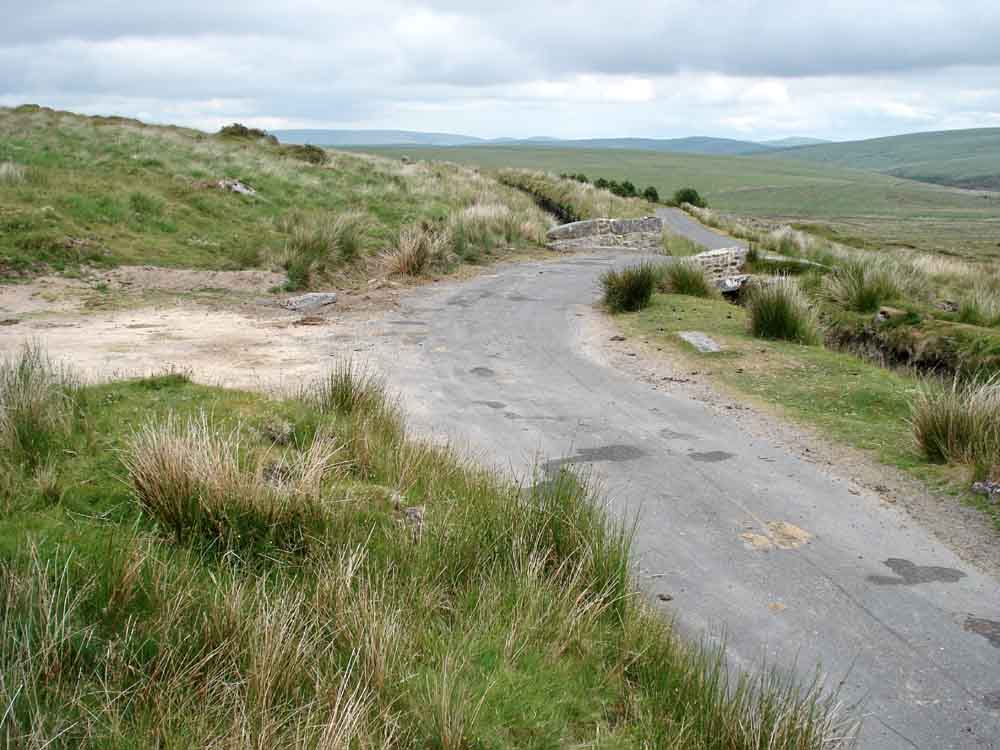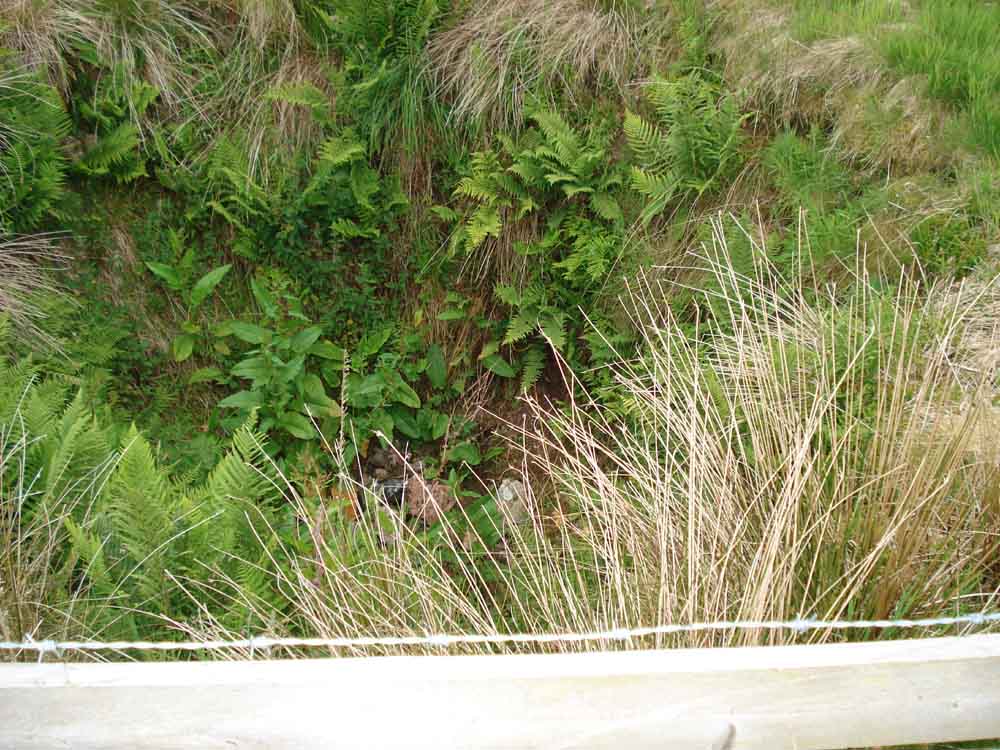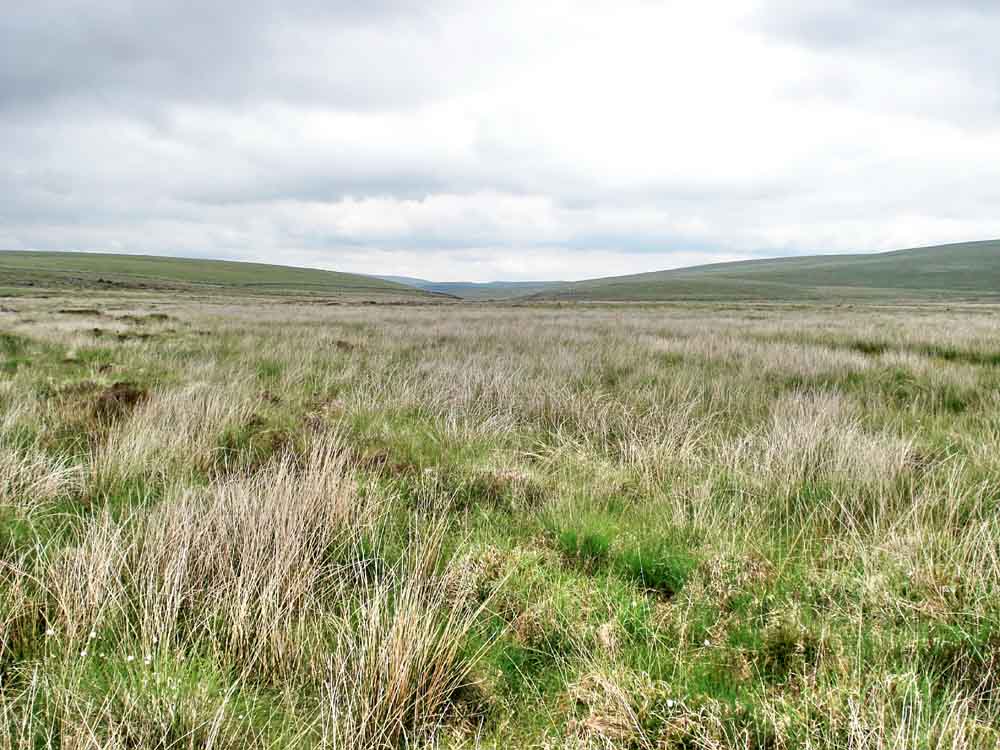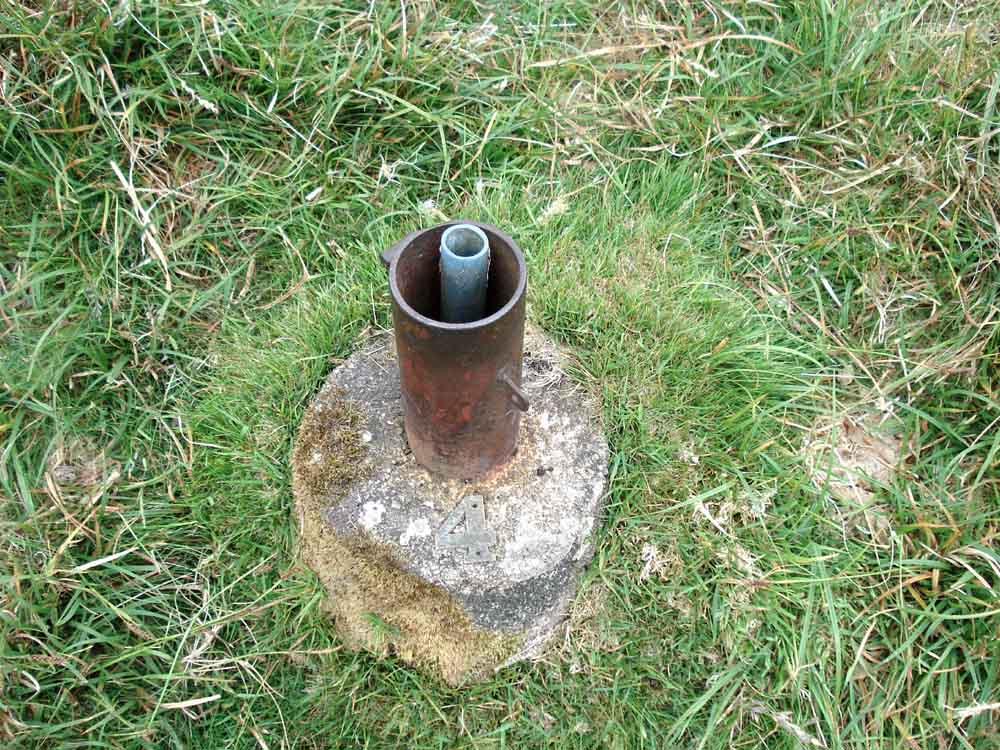


This walk: 2010-6-24. Fox Tor Mire, Whiteworks, Devonport leat, Whiteworks Farm, mine shafts, Drift Gate, Goldsmith's Cross, cist 1 - The Gold Box, Fox Tor, Childe's Tomb, Fox Tor Girt, dry Wheal Emma Leat, River Swincombe, cist 2, cist 3, DPA - Dartmoor Preservation Association.
The finer distinctions between 'mire' and 'bog' can be seen HERE. A simple distinction is that bogs are fed by rainfall and mires are fed by groundwater springs.
This page records the crossing of Fox Tor Mire on a hot, grey day ..... crossings are not to be undertaken lightly. Some guides can take parties across even in winter or at night when it is very wet. On June 30th, one of us (KR) went across a second time and a colleague thrust a 6 ft. bamboo straight down into the bog! There is a safe path but it moves with the bog each year.
The walk is based on an exploration of FH (Harry) Starkey in Exploring Dartmoor, revised edition 1988: Exploration 10 - Whitewoks, Fox Tor Mire, Childe's Tomb, Fox Tor, Nun's Cross Farm, Peat Cot. We took a different direction after Fox Tor by going east instead of west.
A follow-up walk on 30 June 2010 proved the mire is up to at least 6 feet deep in places - BE WARNED!
Walk details below - Information about the route etc.

The scene by the small quarry car park at Whiteworks, with the bridge over Devonport leat.

One of the ruins at Whiteworks Farm - according to Starkey, although there were extensive tin mining works here .....

More ruins at Whiteworks.

Looking down one of the fenced-off mine shafts at Whiteworks .....

Fenced-off mine shafts at Whiteworks.

A not-so-deep mine shaft surrounded by a stone wall.

Drift Gate, the gateway to the beyond - Fox Tor Mire, or Grimpen Mire - this is said to be Sir Arthur Conan Doyle's inspiration for the famous mire in Hound of the Baskervilles.

A view from the middle of the mire, looking north-eastwards towards the Swincombe valley .....

Near the middle of the mire, with the cottages at Whiteworks in the background.

Zoomed view to civilisation, at Whiteworks! The cottage on the left is a 20-bed bunkhouse owned by Plymouth College and is leased out for Outward Bound-type activities (currently �55 per night).

Goldsmith's Cross, SX 61655 70154 � 2 metres ....

Goldsmith's Cross with Whiteworks in the background, across the mire.

Cist 1, Fox Tor Mire cairn and cist, SX 61801 70312 � 3 metres, this Legendary Dartmoor web page, entitled Grim Mire, notes "Not far from Childe's Tomb lies an ancient tomb or kistvaen which dates back to the Bronze Age, this is known as 'The Gold Box' and was said to have contained treasure belonging to a long dead chieftain"......

The cist with Whiteworks in the distance, across the mire .....

A near-aerial view of the cist with the retaining stone "circle" or cairn, obtained by standing on tip-toe and hoping!

Fox Tor, SX 62613 69820 � 3 metres, elevation 438 metres (1436 feet).

Childe's Tomb (Legendary Dartmoor link), SX 62574 70293 � 3 metres .....

Childe's Tomb (Dartmoor Crosses link) with Fox Tor behind .....

The interior of the large cavity inside Childe's Tomb.

The top of Fox Tor .....

Fox Tor from another direction, the flat rocks proved a good place to have lunch, out of the breeze!

Looking down the bottom end of Fox Tor Girt ..... an area where the ground was dug over for tin .....

Looking up the girt.

Looking west along the dry Wheal Emma Leat, at SX 62800 70210.

Looking up the River Swincombe.

Ruins near the River Swincombe bank
.....
From an
email, citing Mike Brown's Guide to Dartmoor: I think this is the little building which has a lintel inside with
letters on it: "On
the left bank of the river just below the newtake wall east of the gate is the
ruined building known as Sam Parr�s house, the fireplace still intact in the
northeast corner, next to which is a fine cupboard recess. On the inner face of
a large flat slab in the southeast corner of the building is an inscription �IC
1753�. The building has been described as having taken its name from a
mid-nineteenth century labourer who worked at nearby Fox Tor Farm (q.v. grid
square 6270) and who briefly made the ruin his dwelling, but Samuel Parr was in
fact described as a husbandman at Fox Tor as early as 1835 � in the baptism
entry of his first child, recorded in the Princetown registers � so his drop in
status to that of an ordinary labourer must have come in later years, perhaps as
a result of the depression which gripped the nation in the late 1830s and early
1840s. During the period when Sam Parr occupied the cramped converted building
with his wife and two children it became known as Stream (Strane) Cottage. To
whom, or what, the inscription refers is unknown.
Legendary Dartmoor mentions Sam Parr's house being an old blowing house before Sam Parr took up residence in it.
There are tinners' huts in the area, shown on Google Earth, that we learned about after the walk, such as here and here.

Looking across the bleakness of the mire to Whiteworks.

Part of the ruins of Foxtor Farm .....

Foxtor Farm .....

Foxtor Farm .....

Foxtor Farm .....

Foxtor Farm.

Looking back at Fox Tor from Foxtor farm with Fox Tor Girt running up the left slope.

An oddity bearing a number "4", at SX 62846 70982 � 3 metres, about 10 metres from the following cist ..... it may be an old bore hole from the 1970's when there was a proposal to flood the Swincombe valley for a new reservoir.

Cist 2, Ter Hill South cist, largely hidden, at SX 62857 70981.

Cist-3, Ter Hill North cist, at SX 62857 71168 � 3 metres .....

Cist 3, looking north-east, the yellow track seen across the valley proved to be a layer of dead grass caught against a wire fence.

Swincombe dam and waterworks.

"FB" - clapper bridge at SX 6278 7132 ..... looking along the dry leat .....

Looking down onto the leat and clapper bridge .....

The bend in the river Swincombe where we valiantly made a river crossing, with the dry leat running across the slope approx. halfway up and with the clapper bridge visible to the left of the stone wall running up the hill. An alternative crossing point is at Headweir Ford (Harvey map), somewhere near SX 62270 70980, where there is a path back to Whiteworks.

"DPA", marking a boundary of the Swincombe valley property holding of Dartmoor Preservation Association .....

Another view of the DPA marker stone.

A last look across Fox Tor Mire, a bleak and lonely place.
MAP: Blue = planned route, Red = GPS satellite track of the walk.
The blue lines are the compass or GPS bearings. The red line is the route actually walked: it deviates sometimes from the blue lines to avoid obstacles such as thick bracken, gorse, bogs or clitter, and often to use paths or animal tracks that are not on the map. It may also be shorter than the planned (blue) route if the walk is curtailed for some reason.

Ordnance Survey © Crown copyright 2005. All rights reserved. Licence number
100047373.
Also, Copyright © 2005, Memory-Map Europe, with permission.
The footpath shown on the Ordnance Survey map does not exist today. The orange-topped posts across the mire mentioned in Starkey's book are also gone. There is, however, an interesting "FB" across the stream in the middle of the mire - a path must have gone across here at some time - this might be worth researching for future crossings?
Another item of interest: Legendary Dartmoor - Grim Mire: says - at one time a path crossed the mire in a direct line from Drift Gate to Little Fox Tor. This old track followed the line of an overgrown reave and was also marked by a line of long gone wooden posts. He does warn that to lose the path along this track would be, "highly dangerous". This direct line passes over the FB (foot bridge) and by the cist!
The walk was accessed from Princetown by following Tor Royal Lane down to Whiteworks. There is a small car park (with three spaces?) in a small quarry by the bridge over the leat, marked by the yellow cross on the map. Otherwise, there is a larger quarry further back on the road.
Statistics
Distance - 8.80 km / 5.47 miles
Start 12.00 am, Finish 4.22 pm, Duration 4 hr 22 min
Moving average 3.2 kph / 1.99 mph; Overall average 2.0 kph / 1.24 mph.
All photographs on this web site are copyright ©2007-2016 Keith Ryan.
All rights reserved - please email for permissions